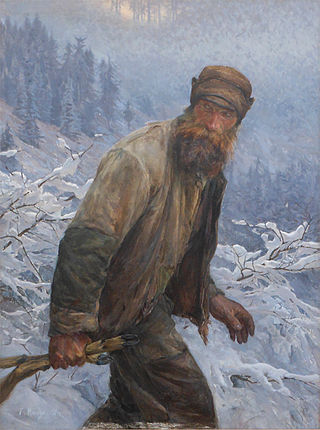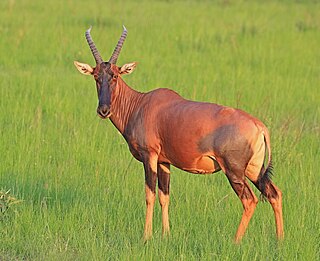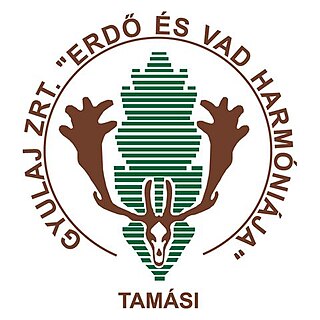Related Research Articles

Hunting is the human practice of seeking, pursuing, capturing, or killing wildlife or feral animals. The most common reasons for humans to hunt are to exploit the animal's body for meat and useful animal products, for recreation/taxidermy, although it may also be done for non-exploitative reasons such as removing predators dangerous to humans or domestic animals, to eliminate pests and nuisance animals that damage crops/livestock/poultry or spread diseases, for trade/tourism, or for ecological conservation against overpopulation and invasive species.

Poaching is the illegal hunting or capturing of wild animals, usually associated with land use rights. Poaching was once performed by impoverished peasants for subsistence purposes and to supplement meager diets. It was set against the hunting privileges of nobility and territorial rulers.

The Bureau international des expositions is an intergovernmental organization created to supervise international exhibitions falling under the jurisdiction of the Convention Relating to International Exhibitions.

The International Council for Game and Wildlife Conservation (CIC) (French: Conseil International de la Chasse et de la Conservation du Gibier, German: Internationaler Rat zur Erhaltung des Wildes und der Jagd) is a politically independent not-for-profit international organisation, aiming to preserve wildlife through the promotion of sustainable use of wildlife resources. The initialism "CIC" comes from the organisation's original French name Conseil International de la Chasse.

Trophy hunting is a form of hunting for sport in which parts of the hunted wild animals are kept and displayed as trophies. The animal being targeted, known as the "game", is typically a mature male specimen from a popular species of collectable interests, usually of large sizes, holding impressive horns, antlers, furs or manes. Most trophies consist of only select parts of the animal, which are prepared for display by a taxidermist. The parts most commonly kept vary by species, but often include head, hide, tusks, horns, or antlers.

The Boone and Crockett Club is an American nonprofit organization that advocates fair chase hunting in support of habitat conservation. The club is North America's oldest wildlife and habitat conservation organization, founded in the United States in 1887 by Theodore Roosevelt and George Bird Grinnell. The club was named in honor of hunter-heroes of the day, Daniel Boone and Davy Crockett, whom the club's founders viewed as pioneering men who hunted extensively while opening the American frontier, but realized the consequences of overharvesting game. In addition to authoring a famous "fair chase" statement of hunter ethics, the club worked for the expansion and protection of Yellowstone National Park and the establishment of American conservation in general. The club and its members were also responsible for the elimination of commercial market hunting, creation of the National Park and National Forest Services, National Wildlife Refuge system, wildlife reserves, and funding for conservation, all under the umbrella of what is known today as the North American Model of Wildlife Conservation.

Safari Club International (SCI) is a US organization composed of hunters dedicated to protecting the “freedom to hunt.” SCI has more than 40,000 members and 180 local chapters. SCI members agree to abide by the organization's code of ethics, which includes making a positive contribution to wildlife and ecosystems, complying with game laws, and assisting game and fish officers.
Humane Society International (HSI) is the international division of The Humane Society of the United States. Founded in 1991, HSI has expanded The HSUS's activities into Central and South America, Africa, and Asia. HSI's Asian, Australian, Canadian, and European offices carry out field activities and programs.

A hunting license or hunting permit is a regulatory or legal mechanism to control hunting, both commercial and recreational. A license specifically made for recreational hunting is sometimes called a game license.

The Transylvanian Hound is a dog breed originating from Hungary and Transylvania and was historically primarily used for hunting. It is a strong, medium-sized scent hound, characterized by a black body, with tan and sometimes white markings on the muzzle, chest and extremities, and distinctive tan eyebrow spots. It has a high-pitched bark for a dog of its size. The breed was rescued from extinction by focused breeding efforts in the late 20th century. There were formerly two varieties, the tall and the short, developed for different kinds of hunting in the Middle Ages. Only the tall variety survives today.

Damaliscus lunatus jimela is a subspecies of topi, and is usually just called a topi. It is a highly social and fast type of antelope found in the savannas, semi-deserts, and floodplains of sub-Saharan Africa.

The Shanghai Corniche is the riverside of the Shanghai 'West Bund' redevelopment area in Shanghai along a formerly industrial 8.5 kilometre frontage on the northern bank of the Huangpu River in Shanghai’s Xuhui District. The redevelopment is part of a re-urbanisation of the Xuhui river frontage as part of a broader strategy for the banks of the Huangpu River as it passes through the centre of the city, including the Bund, Pudong and the site for the World Expo. The municipality held an international design competition, won in 2008 by Peter Verity the international urbanist and architect of PDRc Ltd ifor which he was awarded the special Shanghai Expo Achievement Award.

Zsolt Semjén is a Hungarian politician. Member of Parliament between 1994 and 1998 and from 2002. Since 2003, he has been the chairman of the Christian Democratic People's Party. Minister without portfolio and Deputy Prime Minister in the second, third, fourth and fifth cabinet of Prime Minister Viktor Orbán. Semjén has been the leader of the Christian Democratic People's Party (KDNP) since 2003, which formed a coalition and alliance with Fidesz.
The Iranian Department of Environment is a governmental organization, under the supervision of the president, that is responsible for matters related to safeguarding the environment.

Gyulaj Forestry and Hunting Private Limited Company is one of Hungary's 22 state owned forestry and hunting companies. Its online marketing brand name is Gyulaj Hunting Hungary. Besides forest management one of its main business activities is big game management carried out in professional and traditional near- nature way. Its game management branch activities include receiving international hunting clients for purpose of hunting for local big game species. Its business premises are located in Tamási, South- West Hungary in Tolna County. Among the Hungarian state-owned forestries Gyulaj Plc is the leader by its highest rate of incomings from hunting section compared to the total annual incomings of the company. By this performance Gyulaj Forestry and Hunting Plc is a key player of the Hungarian big games management and hunting. Its legal predecessors and different hunting grounds look back at a rich hunting history and performance: a heritage that has been kept alive until today. Gyulaj Forestry and Hunting Plc has been operating in the legal form of a private limited company since November 3, 2005. With its center in Tamási it presently does forest management on nearly 23,500 hectares state forestland and quality game management on nearly 30,000 hectares in South-West Hungary.
The Saint-Maurice Wildlife Reserve is a 782-square-kilometre (302 sq mi) wildlife reserve to the north of Shawinigan, Quebec. The reserve is located west of the Saint-Maurice River in the territory of the Mekinac Regional County Municipality. Like all wildlife reserves, this area is dedicated to the conservation, development and use of wildlife as well as the practice of recreational activity. It is not, however, considered a protected area; forest and mining activities are allowed.
The International Expo of Sport was held in Turin, Italy, from 25 May to 19 June 1955. Recognised by the Bureau International des Expositions as a Specialised Expo, it focused on the theme "Sports", and welcomed 120,000 visitors. Delegates from eleven countries participated in the event, which was organised under the umbrella of the Italian National Olympic Committee (CONI).
Expo 2027 is the working title for a BIE recognised specialised exposition to be held in 2027 in Belgrade, Serbia. It is scheduled to begin on 15 May 2027 and close on 15 August 2027. This will be the first time that a BIE Expo is being held in Southeastern Europe. It will also be the first world exposition to be held in the former Yugoslavia.
References
- ↑ "World Hunting Exhibition" . Retrieved 18 April 2017.